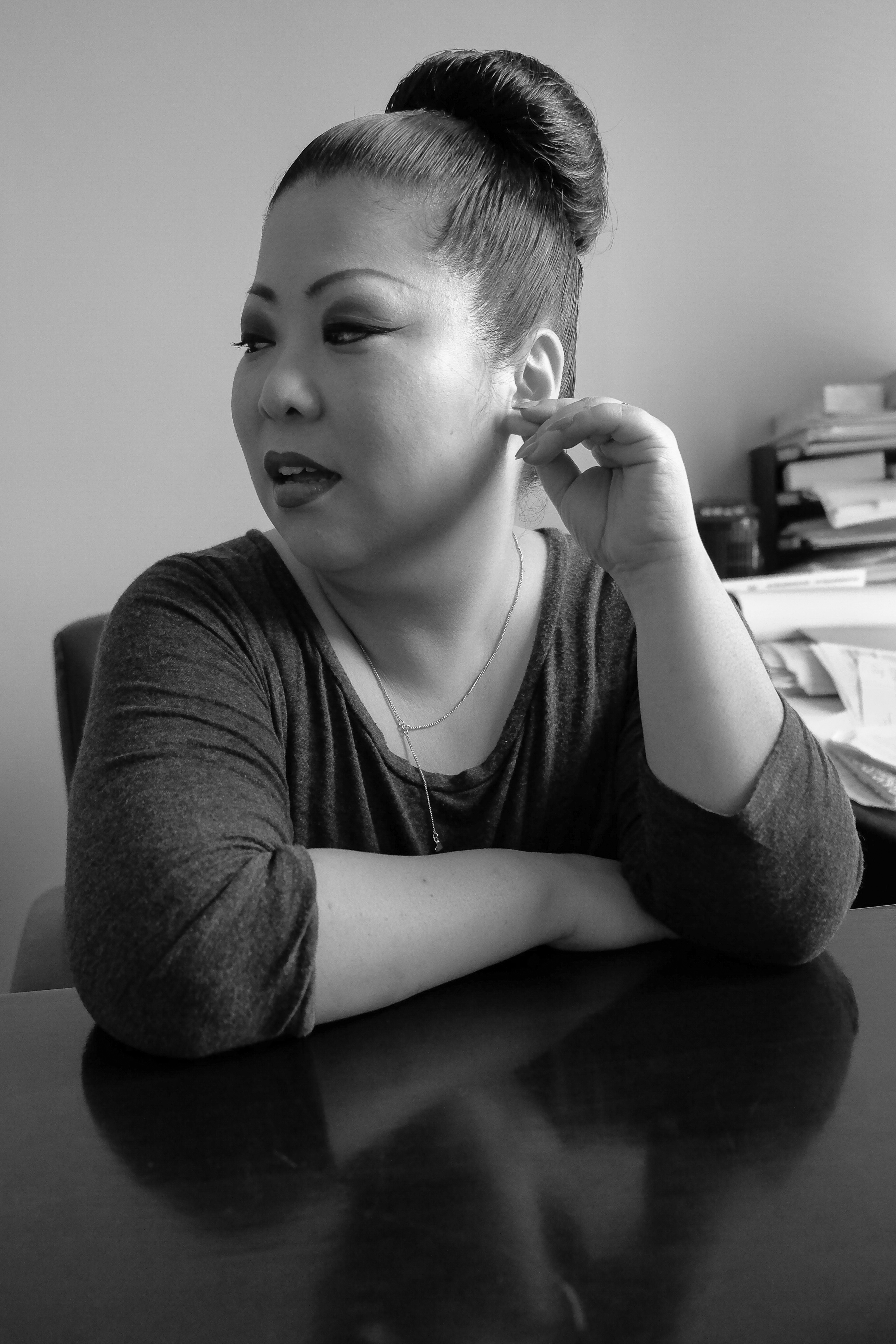Nayon is the KYCC Director of Children and Family Services. Prior to this position, she was the Clinical Services Manager, providing support and guiding clinicians, case managers and interns. Nayon has been with KYCC for 30+ years; when her family first emigrated from Korea, she attended KYCC’s afterschool programs as a first grader. She continued coming to KYCC’s middle school, high school and even college programs, when she returned as a Summer Day Camp counselor. “I put ‘KYCC raised me’ in my cover letter,” Nayon said, laughing. “I’m a product of KYCC and I wanted to give back.”
Where is your hometown?
Incheon, South Korea.
How are you involved with Koreatown?
I have lived and worked in Koreatown my whole life. In high school and college—my formative years—my sister, church friends and I played at the pool halls in Koreatown. I also went to church and ate out in restaurants in Koreatown. No matter what, I will always work or live here. It’s home. I feel like I would be completely lost or out of touch if I did not have a connection to Koreatown.
I still drive by the apartment on Westmoreland and Olympic where I grew up. It’s a touchstone, something of an anchor and reminds me of a lot of childhood good and bad times—struggles, poverty, personal stuff that my family went through.
All my aunts, cousins and grandparents live in Koreatown. My mom still works and live in Koreatown. All my mom’s friends are here. My sister’s here too.
What are your thoughts on Koreatown?
Koreatown evolved and grew up like I did. It’s not as insulated as it used to be. All the signs and menus used to be in Korean. It was never meant to exclude anybody; it was just a function of immigration. In the 1980s, most of the people in the community had just immigrated with kids and they didn’t have time to acquire a second language. As their kids grew up and learned the language, we became more integrated and acculturated as a community. It’s like the weaving of multiple cultures — the Korean culture, the mainstream culture, the 1.5 culture, and all the other groups.
Koreatown is so unique in that the Latino and Korean populations work seamlessly together. Before it used to be business owners and laborers, but now you see a lot more fusion. Businesses are no longer Korean-specific. It’s become a lot more welcoming to other communities and it makes me proud and hopeful. I feel like when you’re a new immigrant, you don’t have a voice. You’re just surviving. You’re working too hard to make a statement, to make movement in this country. You’re a visitor still trying to acclimate. Once you start building a family and roots, you have more investment in the community, and you start shaping the culture of Koreatown. So I see that happening. If you see a lot of business owners today, it’s not the first generation. They’re savvy, hip, attuned not only to the K-Town community, but also the greater L.A. community. There’s a lot of amazing new restaurants and definitely more of a voice. You have a lot of people my age, bilingual and bicultural, who can participate more in the shaping of the community.
What is your favorite part of Koreatown?
The Dragon. It’s this Chinese restaurant a block away from my house. It was there before we got here. It was in the neighborhood, has a family-friendly environment and I connect it to a lot of church celebrations and family events. My college graduation party was there. Since my family lives in Koreatown and goes to church here, it made sense. I like the fact that it’s still there. I just had a reunion three weeks ago with my third-grade teacher and my classmates and we met there because it was somewhere where we all identified as a part of our childhood and our neighborhood. (1505)
